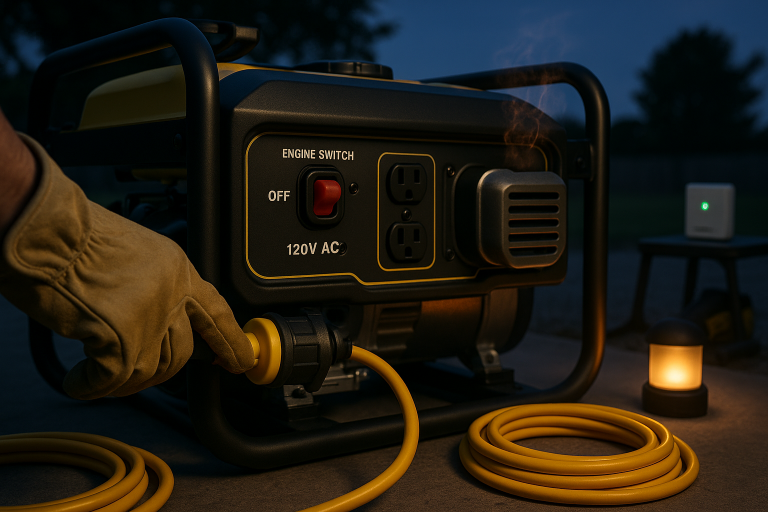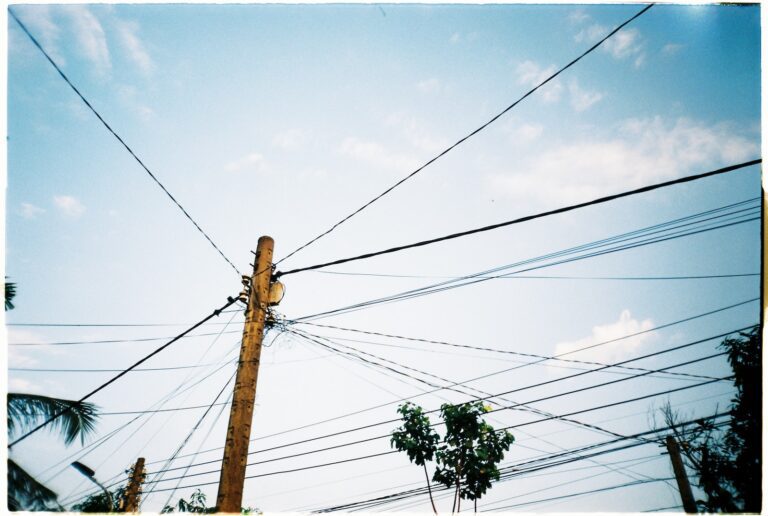How a Generator Transfer Switch Works
Having a generator transfer switch installed is a game changer.
It’s a fascinating device that ensures a seamless and safe transfer of power during a blackout. Acting as a bridge between the utility power supply and your electrical panel, the transfer switch automatically switches to generator power when it detects an outage.
It eliminates the need for manual connections and keeps your generator running smoothly.
Let’s delve into how this ingenious device works!
Key Takeaways
- A generator transfer switch is a device that safely and seamlessly transfers power during a power outage.
- There are two types of transfer switches: manual and automatic. Manual switches require manual operation, while automatic switches switch automatically without any manual intervention.
- The importance of a generator transfer switch lies in ensuring safe and efficient use of the generator, eliminating the need for manual connections, providing a reliable backup power source, and reducing wear and tear on the generator.
- Automatic transfer switches offer additional benefits such as safety during power outages, saving money on maintenance and repairs, convenience of automatic switching, and eliminating the need for manual operation.
Understanding the Basics of a Generator Transfer Switch
I understand the basics of a generator transfer switch and how it works.
A generator transfer switch is a device that safely and seamlessly transfers power during a power outage.
It’s installed between the utility power supply and the electrical panel. The switch monitors the power supply and automatically switches to generator power when there’s an outage.
It then switches back to the primary power source when it’s restored.
Troubleshooting the generator transfer switch involves checking the wiring connections to ensure they’re secure and properly connected.
The wiring of the transfer switch is crucial for its proper functioning, as it allows for the safe and efficient transfer of power from the generator to the electrical panel.
Types of Transfer Switches and How They Differ
There are two main types of transfer switches: manual and automatic.
Manual transfer switches require manual operation to switch power sources. They’re less expensive but require someone to be present for switching. There are different types of manual transfer switches, including single-circuit switches that can only power specific circuits, and whole-house switches that can power the entire house.
On the other hand, automatic transfer switches switch automatically without manual operation. They’re more expensive but offer the convenience and safety of automatic switching. Automatic transfer switches have several advantages, such as ensuring safety during power outages, providing a reliable backup power source, saving money on maintenance and repairs, and eliminating the need for manual operation, reducing inconvenience and potential dangers.
The Role of a Transfer Switch in Ensuring Seamless Power Transfer
To understand the role of a transfer switch in ensuring seamless power transfer, it’s important to know how it functions. A transfer switch serves as a crucial component in a backup power system, providing a safe and efficient way to switch between the utility power supply and the generator during a power outage.
Here are some key points to consider regarding the importance of transfer switch safety and troubleshooting common transfer switch issues:
- Transfer switch safety: The transfer switch ensures that power is transferred safely and reliably, preventing any potential hazards or accidents during the switching process.
- Reliable power transfer: A transfer switch synchronizes the generator’s frequency with the main power source, ensuring a seamless transition without any disruptions or power surges.
- Troubleshooting common issues: Transfer switches can experience problems such as faulty connections or issues with the electrical panel. Regular maintenance and proper troubleshooting techniques can help resolve these issues and ensure the switch functions properly.
- Preventing unnecessary wear and tear: By automatically switching between power sources, the transfer switch reduces the strain on the generator, prolonging its lifespan and reducing the need for costly repairs or maintenance.
- Backup power assurance: With a transfer switch in place, you can have peace of mind knowing that your backup power system is reliable and ready to provide uninterrupted power during outages.
Step-by-Step Guide: How to Install a Generator Transfer Switch
When installing a generator transfer switch, it’s important to follow a step-by-step guide to ensure proper installation and functionality.
Firstly, gather all necessary tools and materials, including the transfer switch, electrical wires, and a junction box.
Next, turn off the power supply at the main breaker and disconnect the utility power feed.
Mount the transfer switch near the electrical panel, ensuring it’s securely attached.
Connect the transfer switch to the main breaker panel using electrical wires, following the manufacturer’s instructions.
Once the wiring is complete, reconnect the utility power feed to the transfer switch and test the system to ensure it’s functioning properly.
If any issues arise, such as a failure to switch power sources or a tripped breaker, consult the manufacturer’s troubleshooting guide for common transfer switch issues.
Key Components and Functions of a Generator Transfer Switch
One important component of a generator transfer switch is the electrical panel, which is responsible for distributing power throughout the building. The transfer switch itself acts as the control center, monitoring the power supply and seamlessly switching between the utility power and the generator power during an outage.
Here are some key components and functions of a generator transfer switch:
- Transfer switch control board: This is the brain of the transfer switch, responsible for monitoring the power supply and initiating the switch between power sources.
- Relays: These are electromechanical devices that physically switch the power source by connecting and disconnecting the circuits.
- Circuit breakers: These protect the electrical system from overload and short circuits by automatically cutting off the power in case of a fault.
- Indicator lights: These provide visual feedback on the status of the transfer switch, indicating whether it’s operating on utility power or generator power.
- Surge protection: The transfer switch may also include surge protection to safeguard the electrical system from voltage spikes.
During the generator transfer switch installation process, it’s important to follow the manufacturer’s instructions and guidelines to ensure proper installation and operation. Troubleshooting common transfer switch issues may involve checking connections, inspecting circuit breakers, and testing the functionality of relays and control board.
Exploring the Benefits of an Automatic Transfer Switch
I love the convenience and peace of mind that comes with having an automatic transfer switch for my generator.
One of the benefits of an automatic transfer switch is the cost considerations for installing it. While automatic transfer switches may be more expensive upfront compared to manual switches, they can save money in the long run.
The automatic switch eliminates the need for manual operation, reducing the inconvenience and potential dangers associated with manual switching. Additionally, automatic transfer switches ensure safety during power outages.
They provide a reliable backup power source and eliminate the risk of human error when switching power sources.
It’s important to follow safety precautions when using a generator transfer switch to prevent accidents and ensure the proper functioning of the switch.
Common Mistakes to Avoid When Using a Generator Transfer Switch
I’ve learned from experience that it’s crucial to avoid messing up the wiring when installing a generator transfer switch. Common mistakes can lead to power outages, damage to the generator, and even electrical hazards. Here are some troubleshooting tips to help you avoid these mistakes:
- Ensure proper grounding of the transfer switch.
- Double-check the wiring connections for accuracy.
- Test the switch before relying on it during an actual power outage.
- Regularly inspect and maintain the transfer switch to prevent any issues.
- Seek professional help if you’re unsure about any step of the installation or troubleshooting process.
Generator Transfer Switch Maintenance: Tips and Best Practices
Regular maintenance is crucial for ensuring the proper functioning of your generator transfer switch. It’s recommended to perform a visual inspection of the switch at least once a month to check for any signs of damage or wear.
Additionally, it’s important to test the switch regularly to ensure that it’s working correctly. This can be done by simulating a power outage and observing the switch’s response. If any issues are discovered during the testing, it’s important to troubleshoot and address them promptly.
When performing maintenance or troubleshooting, always follow generator transfer switch safety precautions to avoid any accidents or injuries.
Conclusion
In conclusion, a generator transfer switch is a vital component for ensuring uninterrupted power supply during blackouts. It acts as a bridge between the utility power supply and your electrical panel, automatically switching to generator power when an outage is detected.
This device not only eliminates the need for manual connections but also enhances safety by reducing the risk of carbon monoxide poisoning and synchronizing generator frequency.
Installing a generator transfer switch is essential for homeowners, business owners, and van dwellers alike to maintain a seamless power transfer during emergencies.



